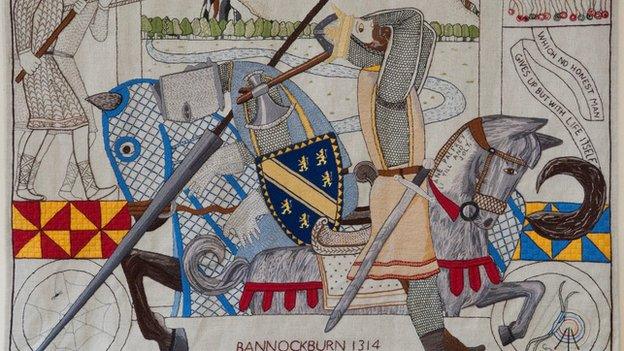Probe into Great Tapestry of Scotland decision process
- Published

The process which led to the decision to house the Great Tapestry of Scotland in Tweedbank is to be the subject of an investigation.
Scottish Borders Council will set up a working group to examine how it handled the procedure.
It comes after more than 4,000 people signed a petition against the project, to which the council allocated £3.5m.
Concerns have also been raised that its planning application was approved by a committee of just four members.
Tweeddale councillor Keith Cockburn said the group will address "public disquiet" over the decision-making process.
"We can definitely make sure that we can learn some things about the consultation," he said.
"There's been many questions about how we looked at the alternative sites, how we looked at the feasibility of the business plan, etc.
"A decision has been made so we have to recognise and respect that, but also look at what we can learn from it."
Working group
A petition against basing the tapestry at Tweedbank was considered "very carefully" by councillors, council leader David Parker said at the time.
However the petitions and deputations committee decided to take no further action.
Councillor Jim Torrance said the working group was not needed as the subject had been fully debated twice at council.
"It's been debated so much I don't see what any working group is going to find out from it that's going to be of any use," he added.
The council's scrutiny committee voted to set up a tapestry working group at its next meeting.
- Published1 October 2015

- Published29 September 2015

- Published18 December 2014

- Published20 November 2014

- Published17 October 2014

- Published1 July 2014
